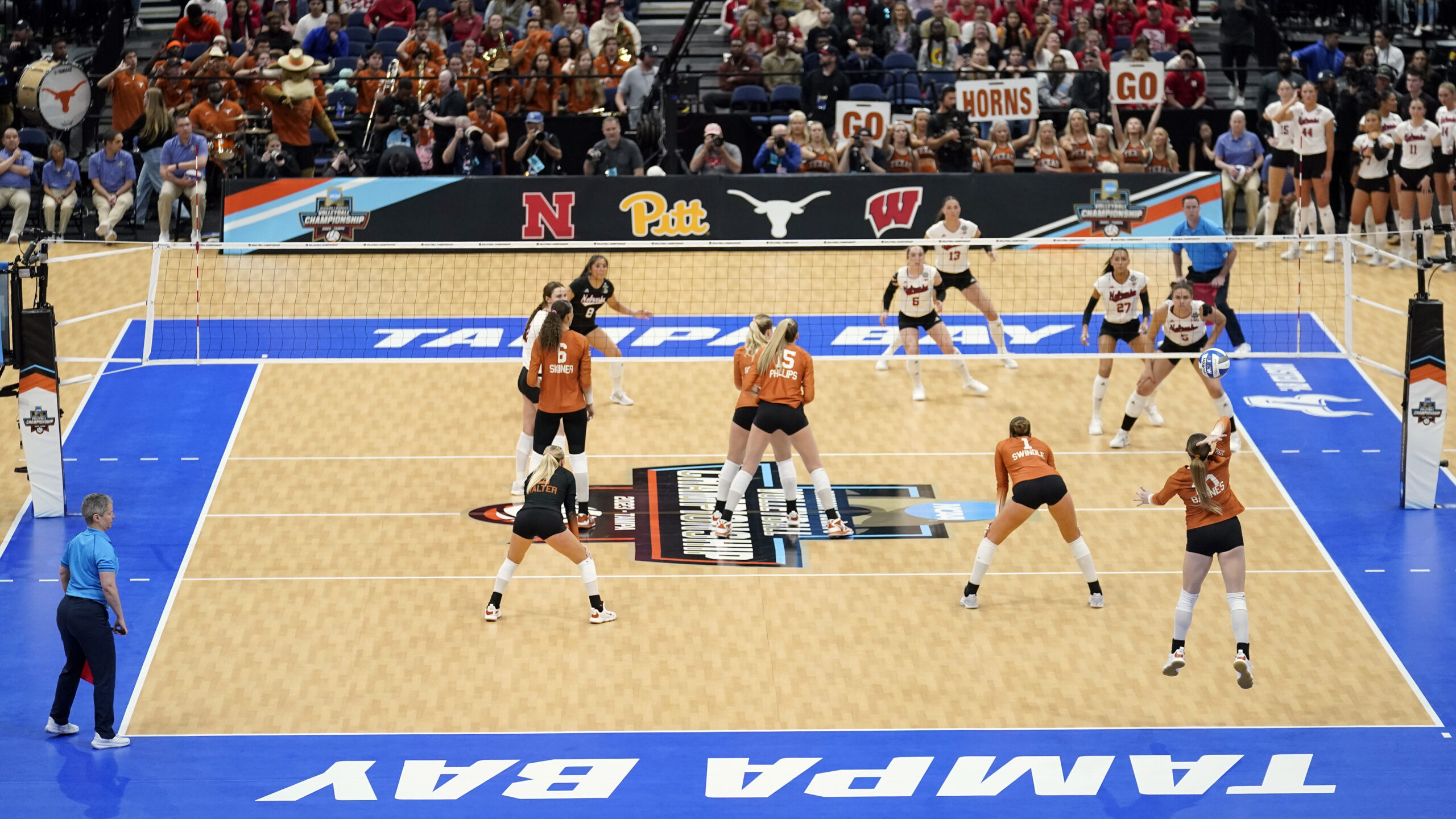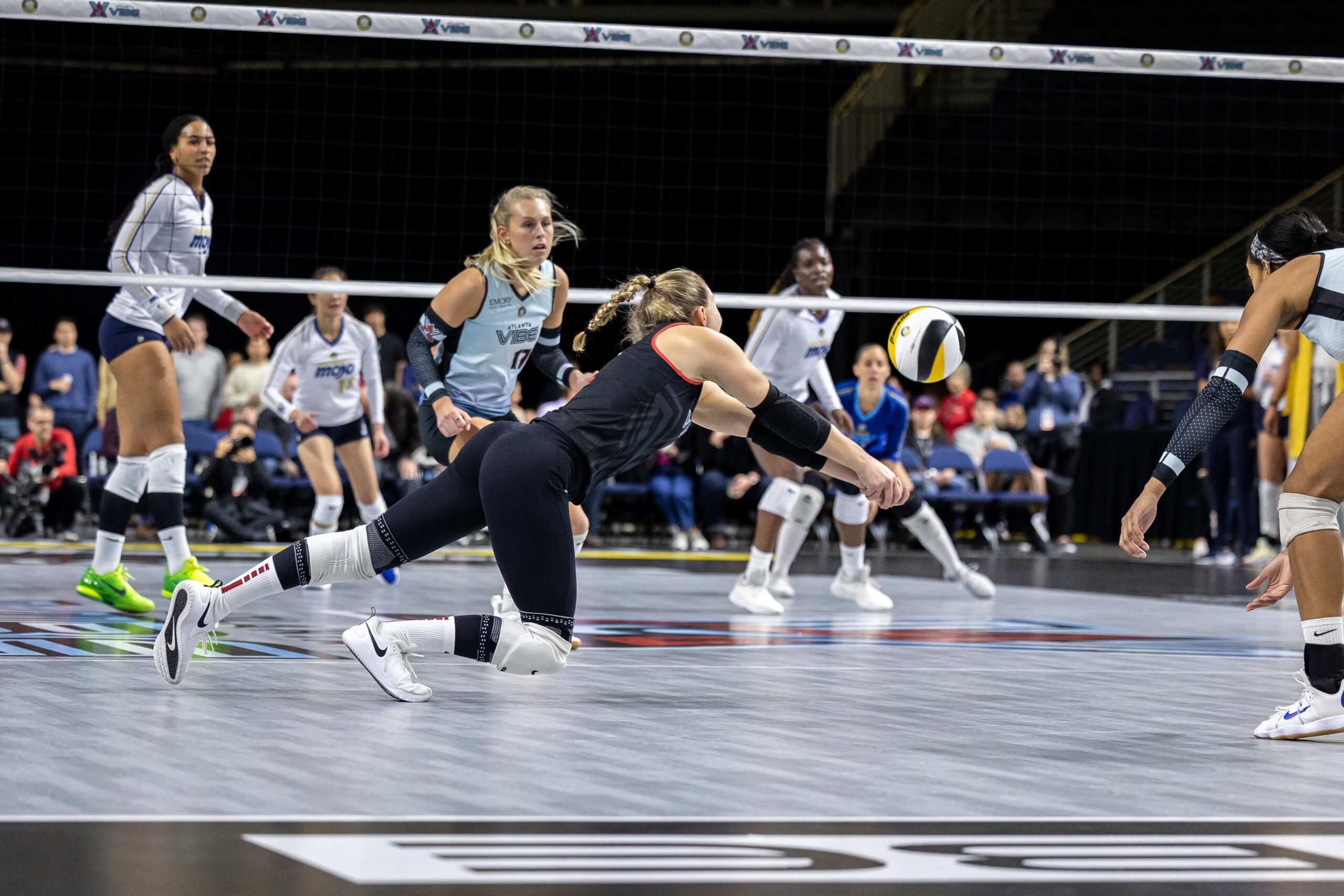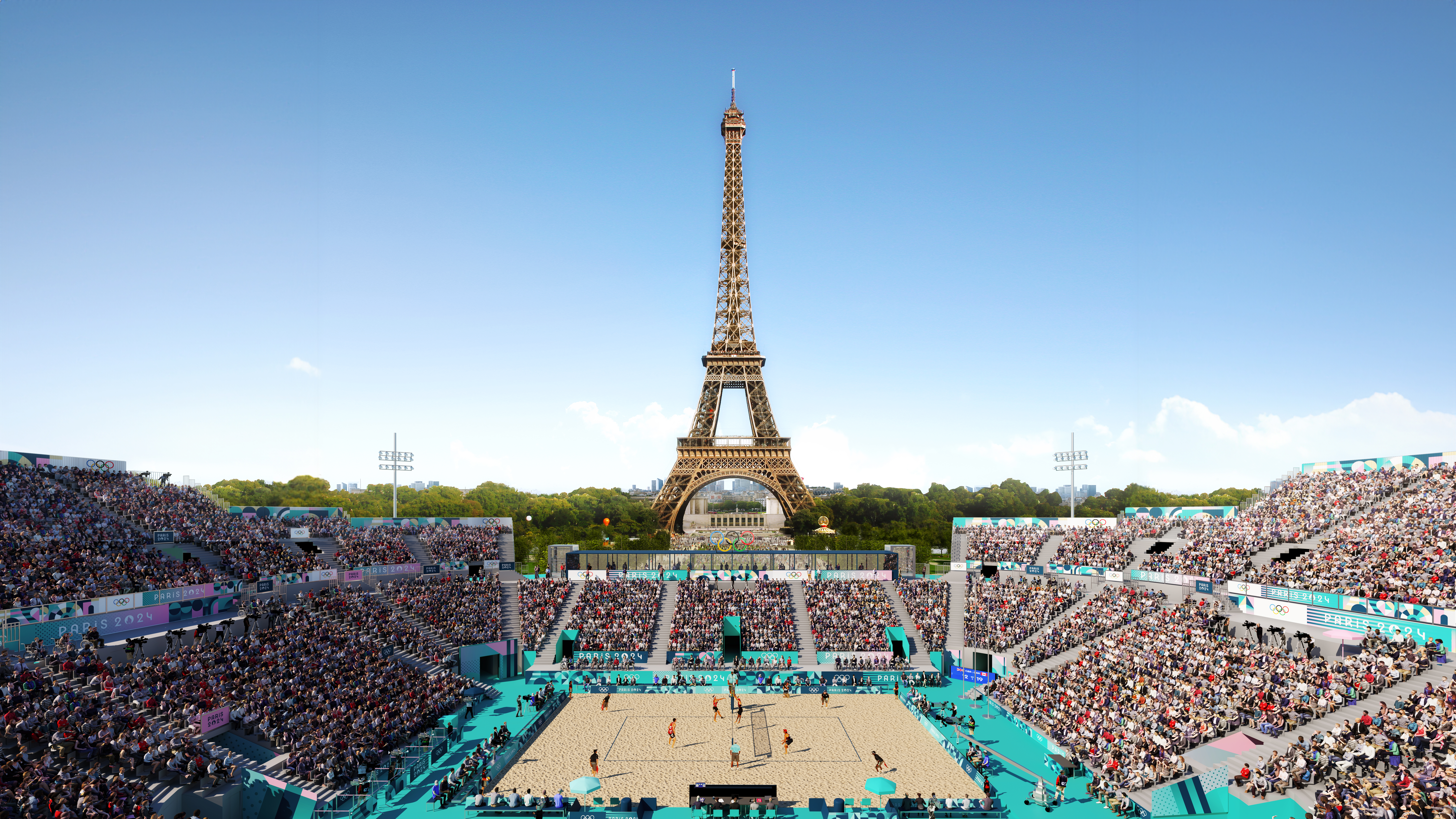Volleyball’s Popularity Continues to Rise
With multiple pro leagues and USA Volleyball's record membership, the sport's growth seems unstoppable
Posted On: June 28, 2024 By :The growing momentum around women’s sports as a whole is exemplified within volleyball. Who can forget the scene in September, when 92,003 people packed Memorial Stadium to watch Nebraska volleyball sweep in-state rival Omaha? Or the gigantic numbers of those waiting outside Amalie Arena in Tampa Bay ahead of the NCAA championship between the Cornhuskers and eventual champions Texas, or the millions watching on television?
More than 30 Division I schools reported setting attendance records at volleyball matches during regular season play, the NCAA said at season’s end last fall, and the American Volleyball Coaches Association reported more than 3.6 million fans attended college volleyball matches this season. The No. 1 sport by participation for girls at the high school level and within college sports has seen an explosion of interest in the past year in part with the expansion of the sport’s television presence showcasing its devoted fandom and now, ahead of the 2024 Olympic and Paralympic Summer Games in Paris, more professional opportunities than ever before for those collegiate stars.
“We’ve built a really good foundation,” USA Volleyball Chief Executive Officer Jamie Davis said. “We’ve continued to try and embrace and bring new people into the sport to try it. Which then gives it the growth within scale that attracts the attention from investors. The investors are therefore the ones who are then now being able to invest in these pro leagues.”
That growing excitement surrounding the sport and its reach extending beyond the youth and amateur levels to collegiate and now professional is not lost on destinations as well.
“I played in Atlanta in high school and there were very few club programs for me to play for,” said Leigh Hooten, director of sports development for the Gwinnett Sports Commission. “I would have had to drive an hour to go to practice every day. We have several clubs now in Gwinnett and it’s really exciting to see how it’s grown and people have embraced it.”
Before, elite volleyball players had to go overseas to continue a career. Now, there are two leagues in operation — Athletes Unlimited started in 2021 and the Pro Volleyball Federation’s inaugural season ends in May — with League One Volleyball, commonly referred to as LOVB, scheduled to start in January 2025.
“In the ’90s when I played there wasn’t as much love for women’s sports,” Hooten said. “It’s really cool to see how it’s grown and the support from everyone in how it’s grown. As jaded as it might sound, as a female athlete, if someone supported us it was great and it was a bonus. Now people rightfully so expect support and are getting it now.”
Explosive Growth Collegiately
When Tampa hosted the NCAA Division I Volleyball Championships in 2009, about 13,000 attended the championship match. Fourteen years later, the city set an all-time collegiate volleyball attendance record for an indoor venue when 19,598 packed in Amalie Arena for the semifinals — a record that lasted less than 48 hours as 19,727 watched Texas defeat Nebraska.
“The event was sold out four months in advance, which I think speaks to compare to 14 years prior where the building was two-thirds full,” said Rob Higgins, executive director of the Tampa Bay Sports Commission. “I think it not only speaks to the growth of the sport, but also the interest in the sport as well as just how much our community has rallied around it.”

The 2023 event generated over 21,000 hotel room nights, Higgins said. It capped off a college season in which Tampa started generating local attention for the event by hosting a new season-opening tournament that included local school University of South Florida along with Florida, Georgia Tech and Penn State.
“We really set the tone by kicking off the season in a unique way,” Higgins said. “We did that in 2009 as well and we had about 5,000 people attend that event back then. This time around, we had over 13,500 attend.”
It’s not only the in-person aspect that has grown within collegiate volleyball. The championship match between Texas and Nebraska was the first NCAA volleyball championship on ABC and set a TV viewership record for the sport, averaging 1.7 million viewers on a Sunday afternoon in NFL season. It was a 115% increase from the 2022 championship match’s viewership and this year’s semifinal matches were the most watched ever, averaging 1.1 million viewers.
“I think the biggest barrier we face in our sport is just visibility.,” said Cassidy Lichtman, head of sport for Athletes Unlimited. “We’ve seen that when you put us on ESPN and Fox that there is a huge audience there. We’re just starting to see a more virtuous cycle of you’re putting us on, we’re getting the numbers, we’re getting on more. And that really started with the college networks.”
To Lichtman’s point, regular season matches averaged 116,000 viewers on ESPN platforms, a 58% increase from last year. And the growth of conference networks such as the SEC Network, Big 10 Network and (before the league’s implosion) Pac-12 Network has meant the sport gets more television exposure than many sports could dream of.
“Looking at the viewership for the Final Four, the Big Ten Network, the Pac 12 Network, all of those pointed to the fact that there are a lot of volleyball fans in this country,” Litchtman said. “They looked at all of those metrics and saw just giant numbers.”
Professional Options Increasing
While the participation numbers have always been there on the youth and collegiate levels, until only a few years ago, there was no place professionally for Americans to compete.
“It sounds nice to go to Europe every year but it’s not a European vacation,” said Lichtman, a former Stanford star who played five years overseas. “It’s six, seven months in another country away from your family. It’s a tough life. There’s not a big safety net. I think there’s a lot of players for years and years wished that they could have had this opportunity at home, myself included. And now with AU and with the other leagues developing, they’re able to potentially stay in the U.S. for the entirety of what would be the overseas season.”
Athletes Unlimited is the most established of the leagues, having started in 2021. With 45 players on four teams rotating teams each week, the league has had each of its five-week seasons in one central location, this year being at Legacy Park in Mesa, Arizona.
“When AU started, it was an entirely brand-new concept so it was a little bit about educating the fan base and bringing them along from college after as players went pro,” Lichtman said. “Now I think we’re getting past that stage. Our linear viewership from just from season two to season three grew 42 percent as we got a deal with ESPN.”

The Pro Volleyball Federation started this year and culminates with a championship weekend in Omaha. With seven teams in Gwinnett, Columbus, Grand Rapids (Michigan), Omaha, Orlando, San Diego and Las Vegas, the league already plans to hit four new markets next season and has a television deal with CBS Sports Network. A third league, League One Volleyball, will start in January 2025 with teams in Atlanta, Austin, Houston, Madison (Wisconsin) Omaha and Salt Lake City with all six teams playing each week rotating among team cities.
“Knowing that there’s two teams coming to Atlanta proves there’s a high demand for the sport,” Hooten said. “I’ve seen a lot of support from the local athletes and the parents. It’s exciting to have a professional women’s team to support here in Gwinnett.”
USA Volleyball has alliances with both PVF and LOVB and did the same when AU started years ago.
“I want to make sure that in the months that they’re not with (the national team) that they’re getting the highest level of competition,” Davis said, who notes another positive in the U.S. pro league growth is “for our coaching staff, it’s so much easier for them to go visit our athletes and check in on them. Karch (Kiraly, the women’s indoor national team coach) just returned from a trip internationally with Turkey and Italy to go see some of our players. Think about how much easier it would be if he just had to go to Atlanta or Omaha or Salt Lake City.”
The growth of U.S. leagues also has a reverse benefit as well, as Davis saw first-hand on a recent Olympic qualifier trip to Poland.
“They are really nervous about what’s happening in the United States,” Davis said of the Polish federation, which operates its own pro league. “And I said, ‘because you’re worried that the U.S. players are going to not want to come here anymore?’ And he goes, ‘we’re real worried that the Polish players are going to all want to come and play in the United States.’
“There are players from around the world who I think are now interested in having that U.S. experience and coming over here. And that just having that exposure to other high level international players, it builds the leagues. And it also does continue that high-level competition that your players would normally get.”
Paris And Beyond
The women’s volleyball rise throughout the past year-plus is reflected in membership numbers for USA Volleyball, which Davis said is at a record high.
“One of the things that we’ve done at USA Volleyball was to build a really solid foundation for the sport,” Davis said. “We wanted to have people try the sport. We knew if they would try it, that they would like it. We have now over 425,000 members and the economic impact that we bring to host cities is huge. And so, the amount of demand to host our qualifiers and to host our championships goes up because our scale just keeps continuing to grow. Right now, our biggest challenge is how do we get more events even on the calendar so that we can meet the demand that is growing within our sport.”
It’s that demand that has made volleyball grow from what would be described as the “Olympic bump,” with sports getting a little burst of attention during an Olympic year but not reaching as far into the collective sports consciousness in the years in between.
“For so long the only thing we had after college was watching the Olympics every four years,” Litchtman said. “And while volleyball is one of the most popular sports in the Olympics, it hasn’t necessarily moved the needle between that four-year period. My hope is that with all of the momentum in college and at the professional level that we’re sustaining that audience beyond the Olympics.”

At the Olympics this year, the women’s teams in indoor, beach and Para volleyball will each be defending gold medals. And with the indoor game growing in attention and the beach venue in Paris situated below the Eiffel Tower, the potential to enjoy the Games experience after the pandemic-affected Games in Tokyo exists.
“We’re seeing it in the demand for tickets, it’s just unbelievable,” Davis said. “The requests that we’re already getting in for friends and family tickets to be able to come and delegations to come support them are massive. We’re really well positioned — knock on wood, any given Sunday — but I think we’re in good positions to have a chance to win several medals this summer.”
And the growth of the professional game, coupled with the potential for even larger Olympic buzz in Paris, encourages those within the sport to think bigger.
“The sky’s the limit for the sport,” Lichtman said. “We’ve grown so much and we’ve come so far and done it honestly with basically no help. When you look at the numbers that we have — the viewership, the audience, the excitement around it, knowing that there’s barely any coverage of the sport, imagine what we could do if given a little bit of a spotlight. I’m excited about kind of where the sport can go.”
Posted in: 2024 Summer Olympic Games, Main Feature, Olympic Sports, Volleyball, Women's Sports